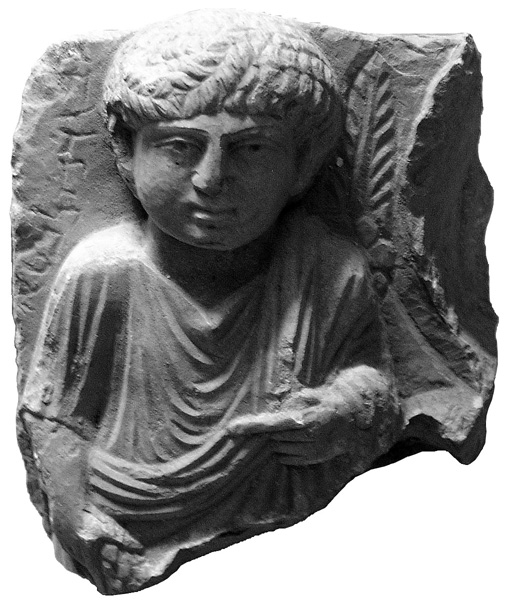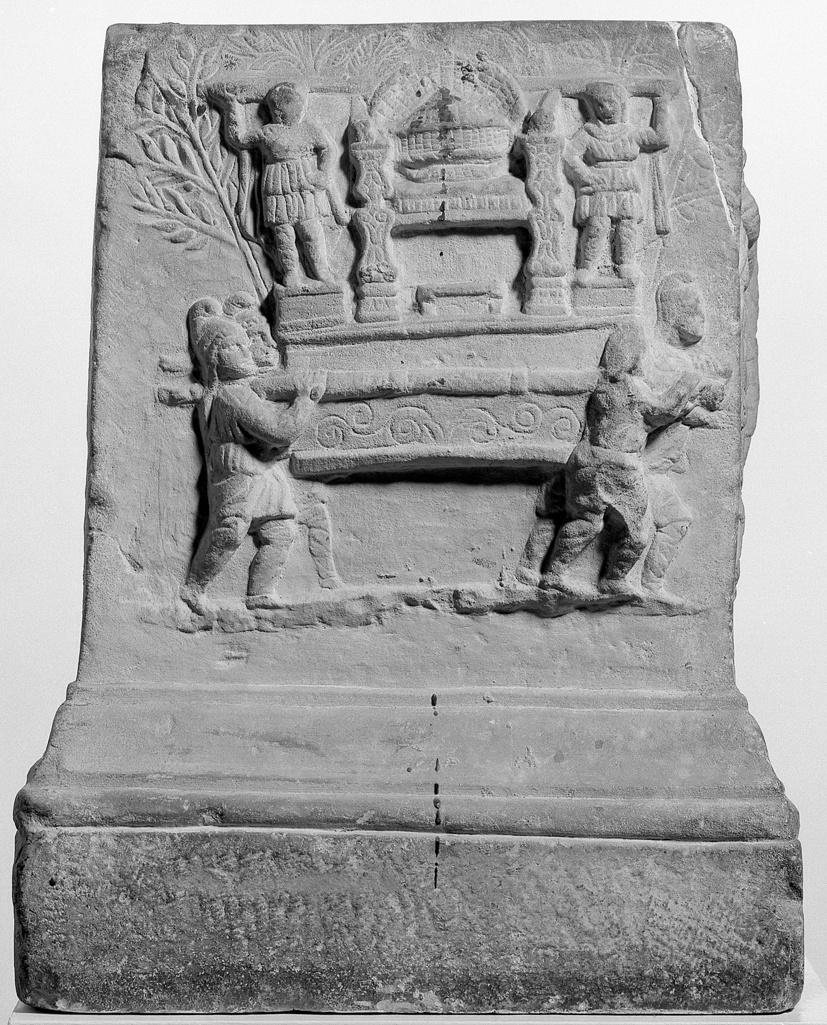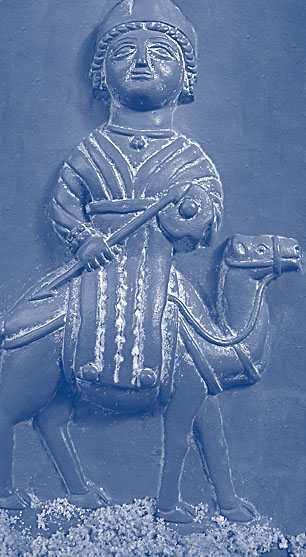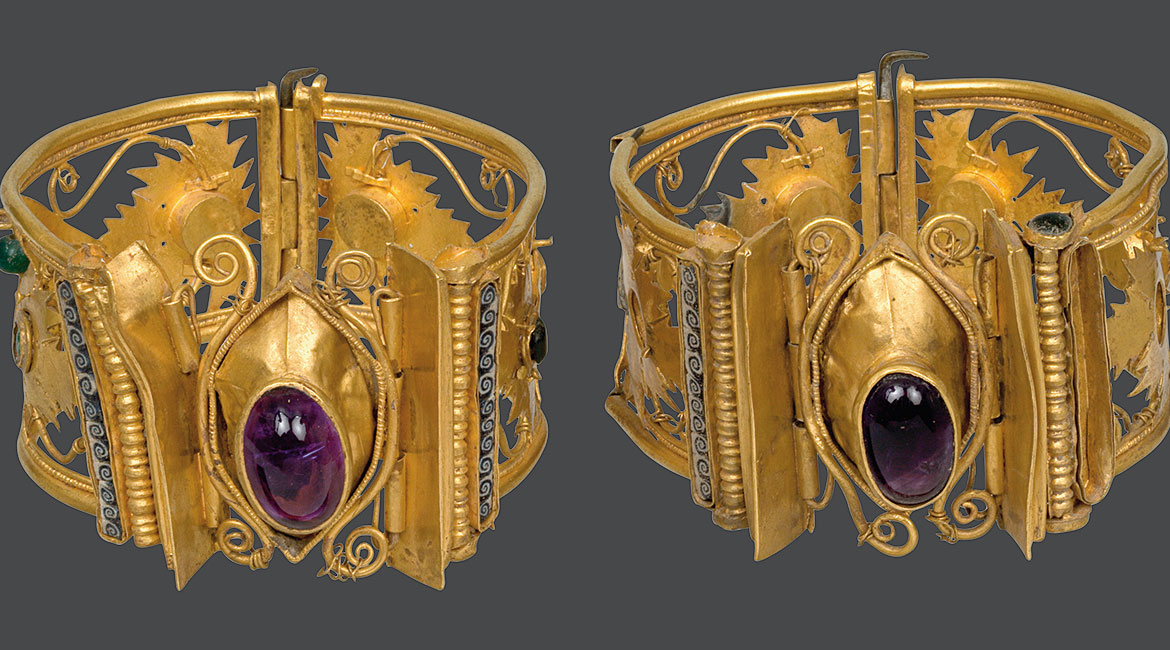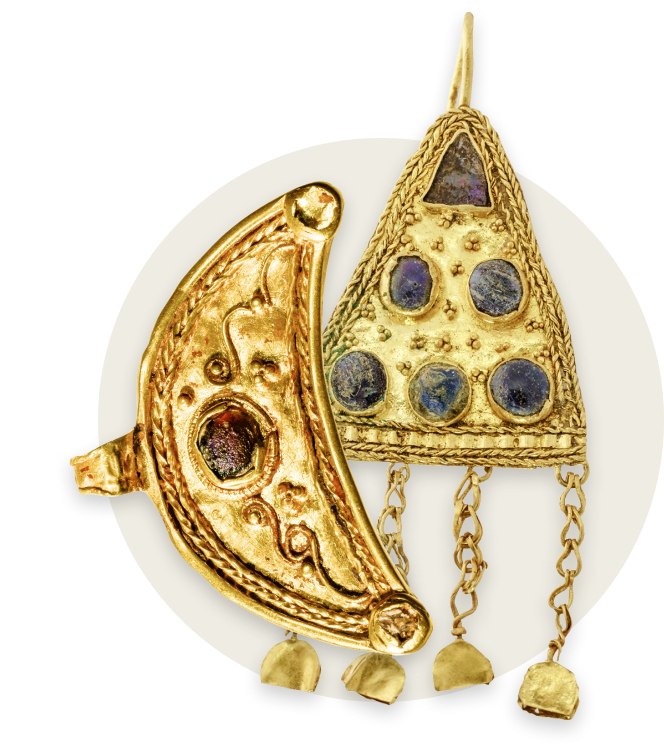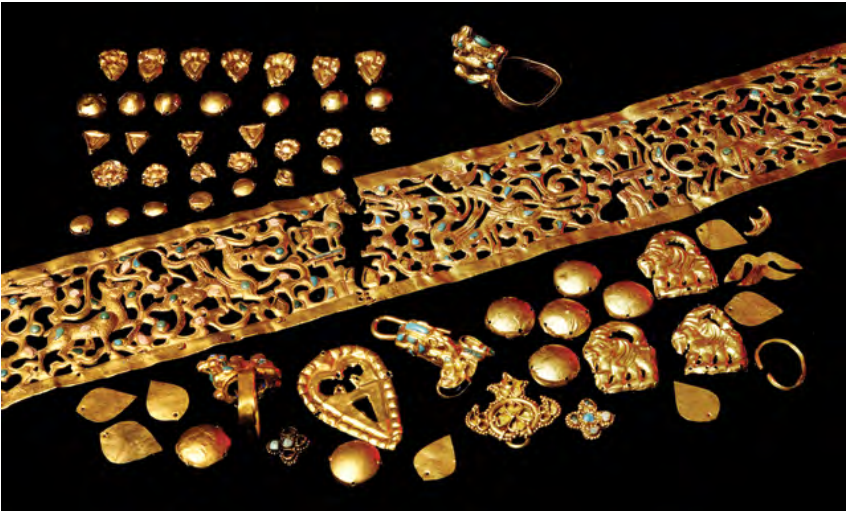For ancient Greeks Paphos was the place were landed Aphrodite when she rose from the sea foam.
Sanctuary of Aphrodite Paphia was the center of her worship not only on Cyprus, but for the whole Aegean world.
According to Pausanias, her worship was introduced to Paphos from Syria (cult was probably of Phoenician origin), and from Paphos to Kythera in Greece.
Only the remains of the Sanctuary survived to this day. But the image of the temple was shown on the rings from Cyprus.
First ring now in the British Museum collection (Pic. 1), dated to 150-250 CE, was found in Cyprus near Koskinu. “The design shows a semi-circular courtyard before the façade of a building. The central tower, with a large conical stone, is flanked by two smaller towers evidently containing pillars.” [BM]
Second ring showing the shrine of Aphrodite at Paphos is now in the Ashmolean Museum collection (Pic. 2), was found in Cyprus also, it is dated 50 BCE – 395 CE. The oval image is small, has dimensions 2.1 x 1.8 cm.

Pic. 1 British Museum 1917,0501.1641

Pic. 2 Ashmolean Museum AN1931.548


British Museum 1772,0314.94 Photograph by A. Masson-Berghoff


British Museum 1905,0114.1 Photograph by A. Masson-Berghoff

Photograph by A. Masson-Berghoff
https://www.britishmuseum.org/collection/object/G_1917-0501-135

Photograph by A. Masson-Berghoff
https://www.britishmuseum.org/collection/object/G_1917-0501-134

Photograph by A. Masson-Berghoff
https://www.britishmuseum.org/collection/object/G_1917-0501-432

Photograph by A. Masson-Berghoff
https://www.britishmuseum.org/collection/object/G_1917-0501-136

© The Trustees of the British Museum
https://www.britishmuseum.org/collection/object/G_1917-0501-175

Bronze coin of the Emperor Caracalla (A.D. 198-217) issued by the Community (Koinon) of the Cypriots showing the temple of Aphrodite at Paphos
(British Museum)

193-211, Cyprus
in British Museum
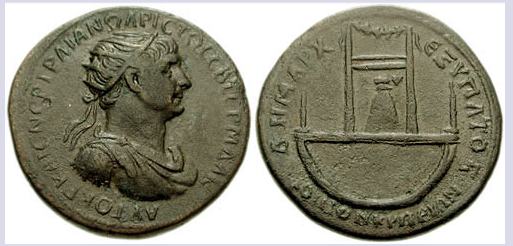
Trajan, AE of Paphos, Cyprus. Radiate, draped, and cuirassed bust right / Temple of Paphian Aphrodite, cone flanked by two stars within; two columns on either side, semi-circular court in front. BMC 38; SNG Copenhagen 82.

“Palea Paphos was one of the most important pilgrimage centres in the Greek world due to its famous Sanctuary of Aphrodite; the goddess herself was born of the sea near Paphos, and floated in on a scallop shell. When she arose, she was hailed as ‘Cyprian’.
The Sanctuary of Aphrodite continued to flourish well into the Roman era. Several Roman emperors honoured the shrine, and it was visited by Titus in 69 AD when the future emperor was on his way to Egypt. He consulted the oracle of Aphrodite, and was told that he had a great future. The sanctuary was rebuilt by the Romans after the earthquake of 76/77 AD, in a design that preserved the layout of the original. The cult of Aphrodite survived at Palea Paphos until the 4th century AD, when Emperor Theodosius outlawed paganism. Today, virtually nothing remains of the Sanctuary save the holy ground itself.”
Trajan Æ Dupondius of Paphos, Cyprus. 112-117 AD. AUTOKR KAIC NEP TRAIANW ARICTW CEB GERM DAK, radiate, draped, and cuirassed bust right, seen from behind / DH MARX ES UPATO G, Sanctuary of Aphrodite at Paphos, within which is a conical xoanon flanked by two stars, semicircular courtyard around; KOINON KUPRIWN below.
BMC 36 var.; SNG Copenhagen 82. 10.79g, 26mm, 7h.

Julia Domna, AE 31 of Paphos, Cyprus, Before 217 AD. IOYΛ ΔOMNA CEB, draped bust right / KOINON KYΠIΩN, Temple of Aphrodite at Paphos with paved semicircular court before; cone in central portion of temple and candelabra in side sections, each with dove on roof; star in crescent above central roof. BMC 57; SNG Copenhagen 90 var. (younger portrait).

It is depicted on coins and rings in the centre of the temple
wiki

